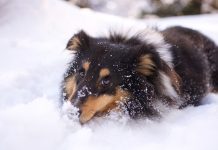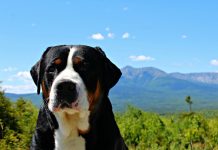History and Origins of the Whippet Breed

The Whippet is a breed of dog that originated in England, where it was developed as a result of crossing various smaller sighthound breeds. Here’s an overview of the history and origins of the Whippet:
- Early Development:
- The Whippet’s history dates back to the 18th century in England, where it was primarily used for hunting small game, such as rabbits, due to its speed and agility.
- It is believed that the Whippet was developed by crossing Greyhounds with smaller terrier breeds to create a faster and more agile dog suitable for coursing and racing.
- Coursing and Racing:
- Whippets were popular among working-class people for their ability to course small game and participate in organized racing events known as “rag races” where they chased after a piece of cloth (rag).
- The breed’s speed and agility made it a favorite in these events and eventually led to the establishment of formal Whippet racing.
- Recognition as a Breed:
- The Whippet was recognized as a distinct breed by the Kennel Club (UK) in the late 19th century. The breed standard was established to preserve the Whippet’s unique qualities and appearance.
- Transition to Companion Dog:
- Over time, Whippets transitioned from their working roles to become beloved companion dogs known for their gentle demeanor, affectionate nature, and athleticism.
- Today, Whippets are still used in lure coursing and racing events but are primarily cherished as family pets and show dogs.
Physical Characteristics and Appearance of Whippets
The Whippet is a slender and elegant breed known for its streamlined physique and graceful movement. Here are the key physical characteristics and appearance traits of Whippets:
- Size:
- Whippets are medium-sized dogs, with males typically standing between 18 to 22 inches (46 to 56 cm) at the shoulder and females slightly smaller.
- Adult Whippets generally weigh between 25 to 40 pounds (11 to 18 kg), with females being lighter than males.
- Body Structure:
- Whippets have a lean and muscular build with a deep chest, well-sprung ribs, and a tucked-up abdomen.
- They have a long, arched neck that blends smoothly into their shoulders, giving them an elegant appearance.
- Head and Face:
- The head of a Whippet is long and narrow, with a flat skull and a slight stop.
- They have expressive, oval-shaped eyes that can range in color from dark brown to hazel.
- Whippets have small, rose-shaped ears that fold back when relaxed.
- Coat and Color:
- Whippets have a short, smooth coat that lies close to the skin, providing protection without bulk.
- The coat comes in a variety of colors and patterns, including solid colors (such as fawn, blue, black, red, and white) or brindle, spotted, or parti-color patterns.
- Tail:
- Whippets have a long, tapering tail that is carried low when relaxed and may be slightly curved when in motion.
- Gait and Movement:
- Whippets are known for their effortless and efficient movement, with a distinctive floating trot.
- They have a flexible spine and powerful hindquarters that enable them to reach impressive speeds when running.
- Overall Impression:
- Whippets possess a combination of elegance, athleticism, and grace. They are agile, swift, and built for speed, yet they are also gentle, affectionate companions.
Whippets are beloved for their charming personalities, affectionate nature, and suitability as indoor pets. They thrive in homes where they receive regular exercise, companionship, and opportunities to showcase their natural athleticism and speed.
Whippet Temperament and Personality Traits
Whippets are renowned for their unique combination of athleticism, grace, and gentle temperament. Here are some key temperament and personality traits commonly associated with Whippets:
- Gentle and Affectionate:
- Whippets are known for their loving and affectionate nature towards their families. They form strong bonds with their human companions and enjoy being close to their owners.
- Good-Natured and Even-Tempered:
- Whippets generally have a calm and even temperament. They are not overly excitable or aggressive, making them pleasant companions in the home.
- Playful and Energetic:
- Despite their laid-back demeanor indoors, Whippets are highly energetic and enjoy outdoor activities such as running, chasing, and playing games.
- They have a playful side and can be quite entertaining with their zoomies and bursts of energy.
- Curious and Alert:
- Whippets are naturally curious dogs with a keen sense of observation. They may show interest in their surroundings and enjoy exploring new environments.
- Intelligent and Quick Learners:
- Whippets are intelligent dogs that respond well to positive reinforcement training methods. They are quick learners and enjoy mental stimulation.
- Sociable with People and Other Dogs:
- Whippets are typically friendly and sociable with people, including children, when properly socialized from a young age.
- They also get along well with other dogs, especially if they have been raised together.
- Reserved with Strangers:
- Whippets may be initially reserved or aloof with strangers but generally warm up quickly once they feel comfortable and secure.
- Sensitive and Empathetic:
- Whippets are sensitive dogs that are attuned to their owners’ emotions. They thrive on positive reinforcement and respond well to gentle handling.
Training and Exercise Needs for Whippets
Whippets have specific training and exercise requirements to keep them physically and mentally healthy. Here are some considerations for training and exercise needs:
- Basic Obedience Training:
- Start training your Whippet from an early age using positive reinforcement techniques such as treats, praise, and playtime.
- Focus on teaching basic commands such as sit, stay, come, and leash walking.
- Socialization:
- Early and continued socialization is crucial for Whippets to develop good manners and confidence.
- Expose your Whippet to various people, dogs, and environments to prevent shyness or fearfulness.
- Exercise Requirements:
- Whippets are active dogs that require regular exercise to stay healthy and happy.
- Provide daily opportunities for running and play, either in a securely fenced yard or on-leash in a safe area.
- Off-Leash Activities:
- Whippets have a strong prey drive and may chase small animals if not properly supervised. Use caution when allowing off-leash activities in unfenced areas.
- Lure Coursing and Racing:
- Whippets excel in lure coursing and racing activities, which allow them to showcase their natural speed and agility.
- Participating in organized events can provide excellent physical and mental stimulation for Whippets.
- Challenging Games and Toys:
- Engage your Whippet’s mind with interactive toys, puzzle games, and challenging activities to prevent boredom and destructive behaviors.
- Consistent Routine:
- Whippets thrive on routine and consistency. Establish a regular schedule for feeding, exercise, and training to maintain their well-being.
By meeting their training and exercise needs while providing plenty of love and attention, Whippets make wonderful companions for active individuals and families. Their adaptable nature and gentle disposition make them well-suited for various lifestyles, from city living to rural environments, as long as their exercise requirements are met.
Health Considerations and Common Issues in Whippets
Whippets are generally healthy dogs with a lifespan of around 12 to 15 years, but like all breeds, they are prone to certain health conditions and issues. It’s essential for Whippet owners to be aware of potential health concerns and work closely with their veterinarians to ensure their dogs’ well-being. Here are some common health considerations for Whippets:
- Heart Conditions:
- Dilated Cardiomyopathy (DCM): Whippets are susceptible to DCM, a condition where the heart muscle becomes weakened and enlarged, leading to heart failure.
- Regular veterinary check-ups and diagnostic testing are essential for early detection and management of heart conditions.
- Orthopedic Issues:
- Luxating Patella: Whippets can be prone to patellar luxation, where the kneecap dislocates from its normal position, causing lameness and discomfort.
- Surgical intervention may be necessary for severe cases.
- Eye Problems:
- Progressive Retinal Atrophy (PRA): This genetic condition can lead to gradual vision loss and blindness.
- Regular eye exams by a veterinary ophthalmologist are recommended for early detection and monitoring.
- Skin Sensitivities:
- Whippets may be prone to skin allergies and sensitivities, including contact dermatitis and flea allergies.
- Proper grooming, regular flea prevention, and a balanced diet can help manage skin issues.
- Gastrointestinal Disorders:
- Gastric Dilatation-Volvulus (GDV): Also known as bloat, this life-threatening condition can occur in deep-chested breeds like Whippets.
- Avoid feeding large meals and monitor for symptoms such as restlessness, unproductive vomiting, and a distended abdomen.
- Hypothyroidism:
- Whippets may develop hypothyroidism, a condition where the thyroid gland doesn’t produce enough hormones.
- Symptoms include weight gain, lethargy, and skin/coat changes. Treatment involves hormone replacement therapy.
- Dental Issues:
- Whippets are prone to dental problems such as tartar buildup, gum disease, and tooth loss.
- Regular dental care, including brushing and professional cleanings, is important for maintaining oral health.
Living with a Whippet: Suitable Environments and Lifestyle Considerations

Whippets are versatile dogs that can adapt well to various living environments, but they have specific needs that prospective owners should consider:
- Indoor Living:
- Whippets thrive indoors and enjoy being part of the family. They are sensitive to extreme temperatures and should be kept indoors in hot or cold weather.
- Provide a comfortable and cozy indoor space for your Whippet to rest and relax.
- Secure Outdoor Space:
- Whippets benefit from a securely fenced yard where they can run and play safely off-leash.
- Supervise outdoor activities to prevent escape attempts or chasing behaviors.
- Regular Exercise:
- Whippets require daily exercise to maintain their physical health and mental well-being.
- Provide opportunities for running, sprinting, and playing fetch in a safe, enclosed area.
- Gentle Handling:
- Whippets are sensitive dogs that respond well to positive reinforcement and gentle training methods.
- Avoid harsh discipline or punishment, as it can cause stress and anxiety in Whippets.
- Socialization:
- Early and ongoing socialization is crucial for Whippets to develop good manners and confidence around people and other animals.
- Expose your Whippet to different environments, sounds, and experiences from a young age.
- Regular Veterinary Care:
- Schedule routine veterinary check-ups, vaccinations, and preventive care to monitor your Whippet’s health and detect any potential issues early.
- Nutritious Diet:
- Feed your Whippet a high-quality, balanced diet tailored to their age, activity level, and specific health needs.
- Avoid overfeeding to prevent obesity, which can strain their joints and lead to other health problems.
By providing a loving home environment, regular exercise, proper healthcare, and positive training, Whippet owners can enjoy a rewarding and fulfilling companionship with these elegant and affectionate dogs. Whippets thrive in homes where they receive the attention, exercise, and care they need to flourish.
Whippet Variations and Breeding Practices
Whippets are a breed with relatively consistent characteristics and appearance, but variations can occur within the breed due to factors such as coat color, size, and minor differences in physical features. Responsible breeding practices aim to maintain the breed standard while promoting health, temperament, and conformation. Here are some aspects related to Whippet variations and breeding practices:
Coat Color Variations:
- Fawn: This is the most common color in Whippets, ranging from pale cream to deep red.
- Brindle: Whippets can have a brindle pattern, which consists of dark stripes on a lighter background color (e.g., fawn brindle).
- Blue: A dilute black color that appears as a bluish-gray.
- Black: Whippets can also be solid black, although less common than other colors.
- White Markings: Some Whippets may have white markings on their chest, feet, or face.
Size Variations:
- Standard Size: Whippets are a medium-sized breed, typically weighing between 25 to 40 pounds (11 to 18 kg) and standing around 18 to 22 inches (46 to 56 cm) tall at the shoulder.
- Toy Whippets: Occasionally, smaller Whippets may be bred, often referred to as “toy” or “miniature” Whippets, although this is not officially recognized by kennel clubs.
Breeding Practices for Whippets:
- Health Screening: Responsible breeders conduct health screenings for genetic conditions common in Whippets, such as heart issues, eye problems, and joint disorders like luxating patellas.
- Conformation to Breed Standard: Breeders adhere to the Whippet breed standard set by kennel clubs and breed organizations, focusing on maintaining the characteristic appearance, temperament, and athletic abilities of the breed.
- Temperament and Behavior: Emphasis is placed on preserving the Whippet’s gentle and affectionate temperament, as well as their natural athleticism and agility.
- Genetic Diversity: Maintaining genetic diversity within the Whippet gene pool is important to prevent the accumulation of genetic disorders and preserve the overall health and vitality of the breed.
- Ethical Practices: Reputable breeders prioritize the welfare of their dogs and adhere to ethical breeding practices, including proper socialization, early puppy care, and responsible placement of puppies into suitable homes.
Rare Varieties and Crossbreeding:
- While Whippets are typically bred according to the standard, rare variations or deviations in coat color or markings may occur naturally within the breed.
- Crossbreeding with other breeds is generally discouraged among responsible breeders to preserve the unique characteristics and heritage of the Whippet breed.
Overall, responsible breeding practices for Whippets focus on producing healthy, well-rounded puppies that conform to the breed standard and exhibit the breed’s desirable traits. Breeders prioritize the health, temperament, and conformation of their dogs, ensuring that future generations of Whippets maintain their status as beloved companions and exceptional athletes.
50 Best Names with Meanings for Whippets
Naming your Whippet can be a fun and meaningful process. Here are 50 great names with meanings for Whippets:
Male Whippet Names:
- Apollo – Greek god of sun and light.
- Zephyr – Greek god of the west wind.
- Atlas – Titan from Greek mythology who held up the sky.
- Orion – Hunter in Greek mythology known for his speed and agility.
- Jett – Represents speed and agility, like a jet plane.
- Racer – Perfect for a fast and athletic Whippet.
- Blaze – Signifies speed and energy.
- Dash – Reflects the Whippet’s quick movements.
- Bolt – Named after the lightning bolt, symbolizing speed.
- Finn – Means “fair” or “white,” suitable for a light-colored Whippet.
- Ace – Represents excellence and top performance.
- Rio – Spanish for “river,” symbolizing flowing movement.
- Jetson – Inspired by futuristic speed.
- Comet – Signifies swift movement through the sky.
- Cosmo – Refers to the cosmos and universe.
- Chase – Reflects the Whippet’s instinct to chase after prey.
- Dexter – Means “skillful” or “dexterous.”
- Flash – Represents quick movements and agility.
- Hunter – Highlights the Whippet’s hunting instincts.
- Neo – Greek for “new,” suitable for a modern and sleek dog.
Female Whippet Names:
- Aria – Italian for “air” or “melody,” representing gracefulness.
- Luna – Latin for “moon,” symbolizing elegance.
- Stella – Latin for “star,” reflecting brightness and beauty.
- Zara – Arabic for “princess,” perfect for a regal Whippet.
- Willow – Named after the graceful tree.
- Jasmine – Represents beauty and grace.
- Nova – Latin for “new,” symbolizing a fresh start.
- Daisy – Reflects innocence and playfulness.
- Sage – Represents wisdom and tranquility.
- Belle – French for “beautiful.”
- Athena – Greek goddess of wisdom and warfare.
- Cleo – Short for Cleopatra, symbolizing royalty.
- Aurora – Latin for “dawn,” signifying a new beginning.
- Fleur – French for “flower,” highlighting beauty.
- Skye – Named after the expansive sky.
- Zephyra – Feminine form of Zephyr, meaning “west wind.”
- Merida – Inspired by the courageous princess from “Brave.”
- Sasha – Russian for “defender of mankind.”
- Zelda – German name meaning “gray fighting maid.”
- Lola – Represents a playful and spirited personality.
Gender-neutral Whippet Names:
- Echo – Represents a sound reflection, suitable for a responsive dog.
- Ripple – Signifies fluid movement and energy.
- Piper – Refers to a lively and musical personality.
- Sable – Named after the coat color, symbolizing elegance.
- Remy – French for “oarsman,” suitable for a swift-moving dog.
- Sunny – Represents brightness and cheerfulness.
- Scout – Reflects an adventurous and curious nature.
- Indigo – Named after the deep blue color.
- River – Signifies fluidity and movement.
- Copper – Represents a reddish-brown color, ideal for a Whippet with this hue.
Choose a name that resonates with your Whippet’s personality, appearance, or the qualities you admire. Whether you prefer a name that highlights their speed, grace, or intelligence, the right name will be a perfect fit for your wonderful Whippet companion.

In conclusion, this comprehensive guide to Whippet dogs has provided a detailed overview of this elegant and athletic breed. Throughout our exploration, we’ve delved into the history, distinctive characteristics, and essential care considerations that define Whippets. Known for their speed, grace, and gentle nature, Whippets make wonderful companions for active individuals and families. They excel in activities such as lure coursing, agility, and obedience, showcasing their athleticism and agility. As you embark on your journey with a Whippet, may you appreciate their unique qualities and form a strong bond with this delightful breed, creating lasting companionship and joy together.






























